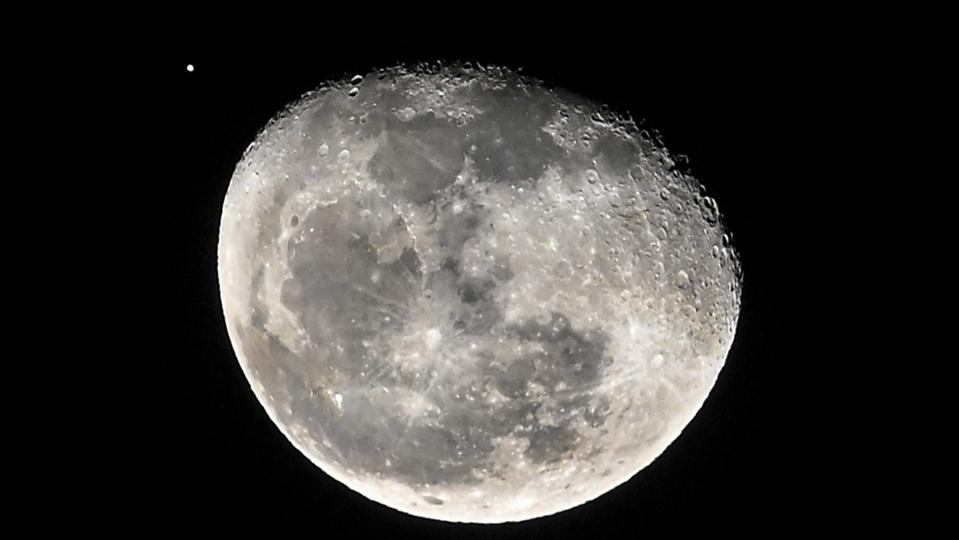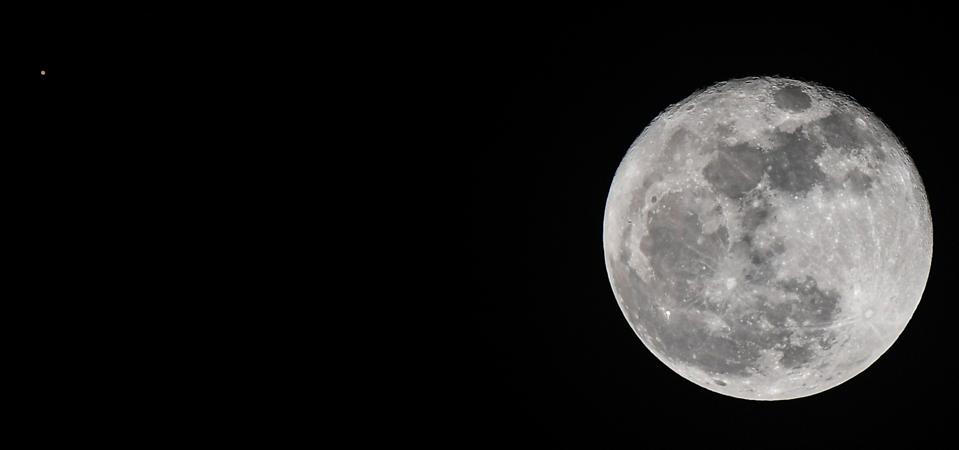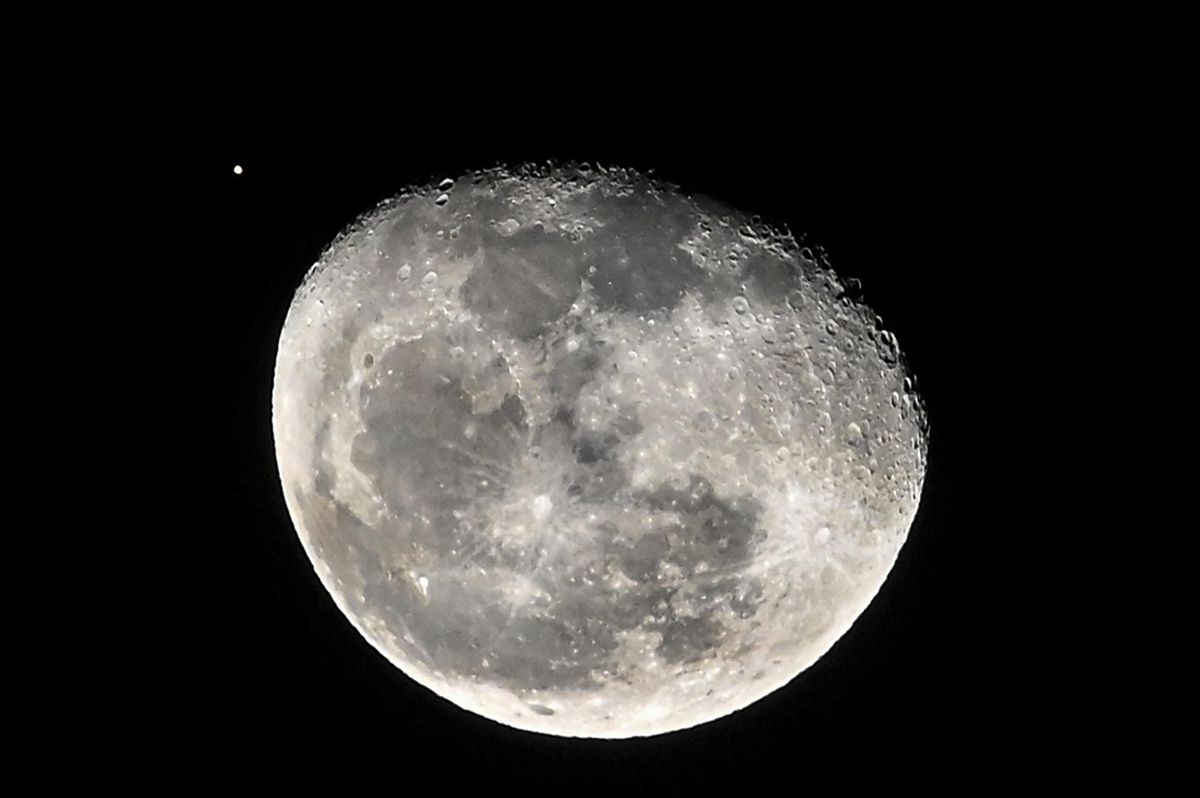
The Moon is seen alongside planet Mars on September 5, 2020 in Cali, Colombia. (Photo by Luis ROBAYO … [+]
AFP via Getty Images
Mars is not what it was.
After spending the latter half of 2020 as a stunningly bright planet, it’s on the wane.
That’s happening because Earth is pulling away from Mars as we continue on our faster journey around the Sun, but before separation gets too serious there’s a fitting finale this week as the Moon shines close to the red planet.
As it does so it will also be possible for those with binocular and telescopes to have a go at looking for the blue-green planet Uranus—the seventh planet from the Sun—close by.
Here’s when to see the Moon, Mars and Uranus in the night sky this week.

View of the moon alongside planet Mars, as seen from Panama City on October 02, 2020. (Photo by Luis … [+]
AFP via Getty Images
When and where to see the Moon and Mars this week
The key times to look are after sunset on Wednesday, January 20 and Thursday, January 21, 2021.
- On Wednesday you’ll see a 50%-illuminated First Quarter Moon in the southern night sky perched about 6º below the red planet Mars, and closing in on it as the night wears on.
- On Thursday it will be possible to see a 60%-lit Moon about 5º from the both Mars and Uranus.
How to see Uranus
Uranus is virtually impossible to see with the naked eye, but this week is nevertheless a great time to find it if you have optical aids.
It’s so far away and so faint that seeing the seventh planet from the Sun means using binoculars or a small telescope, though even with them you’ll only see a blue-green dot.

Find the Moon, Mars and Uranus on Thursday, January 21, 2021.
Jamie Carter
When and where to see Mars and Uranus this week
The reason why this week is a good time to find Uranus is because the “sideways planet” is in conjunction with Mars (and the Moon on Wednesday), and so relatively easy to find in the night sky. You’ll find it about 1.5º below and to the left of Mars.
However, know that Uranus will shine at a magnitude of 5.7, much dimmer than Mars, which will shine at a magnitude of 0.25, though thankfully the blue-green planet is not close to another bright star.
Times and dates given apply to mid-northern latitudes. For the most accurate location-specific information consult online planetariums like Stellarium and The Sky Live. Check planet-rise/planet-set, sunrise/sunset and moonrise/moonset times for where you are.
Wishing you clear skies and wide eyes.
This article is auto-generated by Algorithm Source: www.forbes.com


